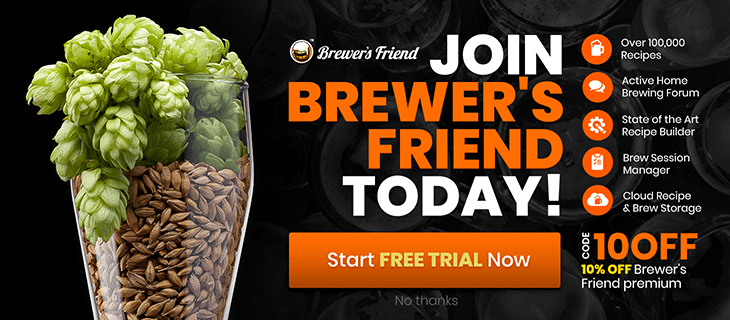All,
I would appreciate any help to my dilemma as follows please:
1/ I kegged a Yorkshire Bitter and carbonated for 48 hours at approximately 30 psi
2/ After 48 hours I dropped psi down to 10-12 for 2 weeks
3/ I disconnected the CO2 and connected a party tap with a foot long beer line on a disconnect
4/ When I pour the beer it is very frothy but drinkable non the less
5/ I have since replaced the party tab line with a 2 metre length but still very frothy
I have read a few articles and the suggestions on them I hope I have actioned.
Any suggestions would be greatly appreciated.
Thanks
Phil
I would appreciate any help to my dilemma as follows please:
1/ I kegged a Yorkshire Bitter and carbonated for 48 hours at approximately 30 psi
2/ After 48 hours I dropped psi down to 10-12 for 2 weeks
3/ I disconnected the CO2 and connected a party tap with a foot long beer line on a disconnect
4/ When I pour the beer it is very frothy but drinkable non the less
5/ I have since replaced the party tab line with a 2 metre length but still very frothy
I have read a few articles and the suggestions on them I hope I have actioned.
Any suggestions would be greatly appreciated.
Thanks
Phil









